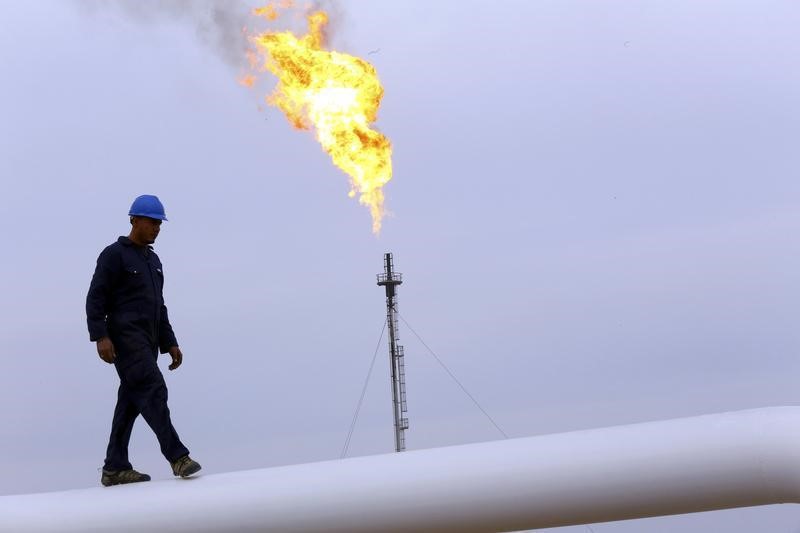By Barani Krishnan
Investing.com -- Global growth worries are intensifying by the hour since the start of the year, pummeling oil prices for a second day in a row on Wednesday as the commodity's top importer China faced increased challenges in containing its COVID-19 contagion.
U.S. West Texas Intermediate crude for delivery in February settled down $4.09, or 5.3%, at $72.84 per barrel, after dropping to a three-week low of $72.77 earlier. WTI, as the U.S. crude benchmark is known, is down almost 10% in just two days of trading since the start of 2023, after finishing last year up nearly 7%.
U.K.-origin Brent crude for delivery in February settled down $4.26, or 5.2%,at $77.84 per barrel after a three-week low at $77.74. Brent is down 9.4% from just two days of trading this year, after finishing 2022 up 10.5%.
“I walked in yesterday looking for a new day, and new year and it feels a lot like Q4 2022,” said Scott Shelton, energy futures broker at ICAP in Durham. North Carolina. “The market is defenseless to the selloff.”
Growth worries aren’t exactly new since the world began recovering from the worst of the coronavirus pandemic, with each country’s progress determined by its relative immunity from the virus and inherent economic strength.
In the case of China, hundreds of millions of people are potentially estimated to be at risk from coronavirus infections before herd immunity is achieved in the world’s number two economy. Thus, China’s zeal to go from a zero-COVID policy to one where officials are now exhorting its people to declare a "final victory" over the virus has raised an alarm across markets.
Concerns over Beijing’s actions have been accentuated after the International Monetary Fund began the year with a tough warning that China and the world’s two other growth engines — the United States and Europe — were all in slowdown mode. Data on Tuesday showed that Chinese manufacturing activity shrank for a fifth straight month in December, as the country grappled with an unprecedented spike in coronavirus cases.
China has also increased export quotas for refined oil products in the first batch for 2023, signaling expectations of poor domestic demand.
Adding to the market’s bearishness were signs that top oil exporter Saudi Arabia could further cut prices for its flagship Arab Light crude grade to Asia in February, after the pricing for that hit a 10-month low this month, reflecting concerns of oversupply, Reuters reported.
In the United States, all focus is on Friday’s U.S. nonfarm payrolls report for December. The jobs report is the first top-tier release of 2023 before next week’s more important Consumer Price Index, or CPI, report.
The nonfarm payrolls report is critical as the Federal Reserve faces a dilemma on whether to keep up with monetary tightening to get inflation to its preferred level or let up on aggressive rate hikes to shield the economy from a slowdown. Higher inflation and rising interest rates have hit the housing sector – and could next hit the labor market, which has shown stupendous growth for the past two years, since the world came off the worst of pandemic. On the other hand, eight nonfarm payroll reports have exceeded economists' estimates, so another positive surprise cannot be ruled out.
Economists expect an increase of 200,000 jobs in December, which would be lower than the 263,000 reported for November, but still extremely healthy by U.S. labor market standards. Before the pandemic, American jobs grew by just under 200,000 a month.
Market participants were also on the lookout for U.S. weekly oil inventory data, due after market settlement from API, or the American Petroleum Institute.
The API will release at approximately 16:30 ET (21:30 GMT) a snapshot of closing balances on U.S. crude, gasoline and distillates for the week ended Dec. 30. The numbers serve as a precursor to official inventory data on the same due from the U.S. Energy Information Administration on Thursday.
For last week, analysts tracked by Investing.com expect the EIA to report a crude stockpile build of 2.227 M barrels, versus the 718,000-barrel rise reported during the week to Dec. 23.
On the gasoline inventory front, the consensus is for a draw of 1.5 M barrels, adding to the 3.105 M-barrel decline in the previous week.
With distillate stockpiles, the expectation is for a drop of 1.833 M barrels versus the prior week’s gain of 282,000.
